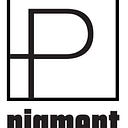BLACK ART OFFERS US A WALK THROUGH HISTORY
“An artist’s duty… is to reflect the times. I choose to reflect the times and the situations in which I find myself,” Nina Simone
The Association for the Study of African American Life and History (ASALH) has designated 2024’s Black History Month theme, African Americans in the Arts. They offer that the influence of African Americans in the visual and performing arts, literature, fashion, folklore, language, film, music, architecture, culinary arts and other forms of cultural expression have been paramount. As such Pigment International would like to take you on a walk through Black art history highlighting just some of the artists and events that have shaped each decade, leaving indelible marks on our country’s art history.
Read this week’s newsletter in its entirety here.
19th Century
Henry Ossawa Tanner paints The Banjo Lesson (1893).
Robert S. Duncanson creates most famous work Land of the Lotus Eater (1861). Duncanson’s work is currently in the Biden White House.
1920s
African American art was the center of the Harlem Renaissance or the ‘New Negro’ movement of the 1920s.
Aaron Douglas — Father of African American art artist, illustrator, graphic designer and most influential and accomplished artist of the Harlem Renaissance.
James Van Der Zee — One of the most significant photographers of the time.
1930s
Augusta Savage exhibits The Harp at the 1939 World’s Fair in NYC. The first African American and first African American female sculptor to exhibit.
Hale Woodruff murals created for Talladega College (1939).
1940s
Works Progress Administration (WPA) provides opportunities for Black artists post-depression (1935).
American Negro Exposition of 1940 held in Chicago.
South Side Community Art Center dedicated by First Lady Eleanor Roosevelt in 1941. Today the longest continuously operating Black arts center in the country that produced cultural trailblazers including Dr. Margaret Burroughs, Eldzier Cortor and Jonathan Green.
1950s
Florida Highwaymen — Florida landscape painters, sold work out of the trunks of their cars (1950s).
During the late 1950s African American art was dominated by Black Abstract Expressionism and realism; their significant practitioners included Charles Alston, educator and WPA Supervisor, Al Loving Jr., Norman Lewis and Romare Bearden.
The African art collection of Alain Leroy Locke (1885–1954) bequeathed to Howard University (1954).
1960s
Wall of Respect — First Community Mural created in Chicago (1967).
AfriCobra — African Commune of Bad Relevant Artists formed (1968).
Black Emergency Cultural Coalition (BECC) formed and led by Benny Andrews in protest of Harlem on My Mind at the Metropolitan Museum in NYC (1969).
Cinque Gallery opens in NYC East Village — founded by Norman Lewis, Jacob Lawrence, Romare Bearden. First African American Art Gallery in NYC operated for 35 years (1969).
1970s & 80s
Richard Hunt becomes first African-American sculptor to be honored with a retrospective exhibition at the Museum of Modern Art (MoMA) in New York (1971).
Festac ’77, 2nd World Black and African Festival of Arts and Culture held in Lagos Nigeria (1977).
Sam Gilliam, based in Washington, DC. and Martin Puryear emerged during the 1980s as a leading African American abstract artists.
Basquiat’s ascension as preeminent artist of his generation (1978).
1990’s
Robert Colescott first African American to represent the U.S. at the Venice Biennale (1997).
2010s
Mark Bradford represents U.S. at Venice Biennale (2017).
Soul of a Nation — Art in the Age of Black Power — Crystal Bridges Museum (2018).
Pigment International formed (2018).
P. Diddy purchases work by Kerry James Marshall for $21M at Sotheby’s (2018).
Kehinde Wiley and Amy Sherald unveil the Obama Portraits (2021).
2020s
Deborah Roberts’ work “The Unseen” on cover of Harper’s Bazaar (2020).
Simone Leigh represents the U.S. at the Venice Biennale (2022).
Vic Mensa And Chance The Rapper Launch The ‘Black Star Line Festival’ In Accra, Ghana. (2023).
Read this week’s full newsletter in its entirety here.
